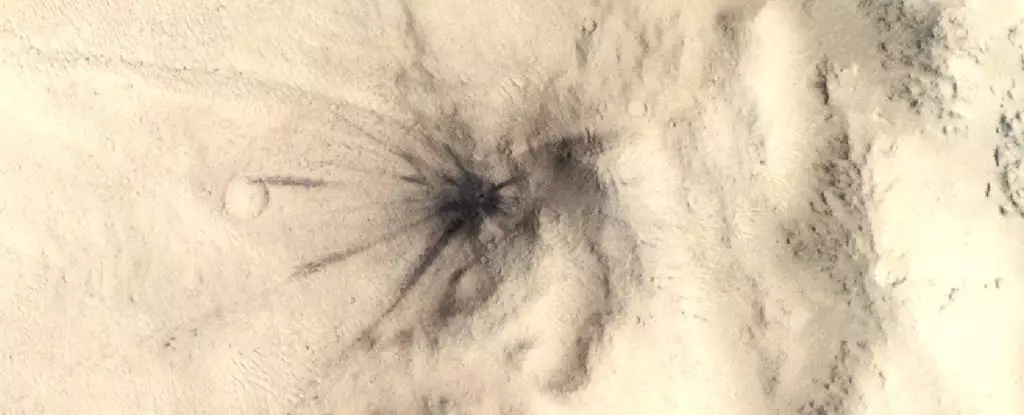The study of seismic activity on Mars, long overshadowed by our explorations of Earth, has taken a significant turn thanks to recent advancements in artificial intelligence and an innovative approach to data analysis. A groundbreaking investigation has revealed that Mars experiences far more dynamic and complex geological activity than previously understood. Current research highlights the dual sources of marsquakes, arising both from tectonic movements and meteoroid impacts, thereby reshaping our conception of the Martian interior and the frequency of its seismic events.
Researchers, led by planetary scientist Valentin Bickel from the University of Bern, capitalized on machine learning techniques to sift through vast amounts of seismic data collected by the Mars InSight lander. This lander, which operated between 2018 and 2022, was equipped with sophisticated instruments designed to probe Martian geology but had initially painted a picture of relative geological dormancy. Astonishingly, InSight detected over 1,300 marsquakes during its operational timeframe, challenging the notion that Mars was nearly geologically inactive.
Utilizing a machine learning framework, scientists identified 123 new craters on the Martian surface that formed during InSight’s mission. By cross-referencing these impacts with seismic activity, they established a correlation, confirming that many recorded marsquakes originated not from tectonic strain but from meteoroid collisions. This revelation marks a significant milestone in planetary science, redefining our understanding of the red planet’s seismic landscape.
Traditionally, the study of marsquakes has been limited to detecting vibrations and their origins, often erroneously attributing them solely to geological processes. However, the latest findings propose an estimated rate of meteoroid impacts on Mars that is 1.6 to 2.5 times higher than earlier assessments. This challenges the prevailing assumptions about Mars, suggesting it is not as geologically inert as once thought, but rather, an active body subjected to a relentless barrage of space debris.
The implications of these findings are profound. For instance, the discovery of a 21.5-meter impact crater in the Cerberus Fossae region revealed a direct link between meteoroid impacts and high-frequency marsquakes. Researchers initially believed that seismic signals from this area were primarily linked to internal geological activity, but the new evidence suggests that external factors are also significant contributors to the seismic landscape, prompting a reevaluation of the dynamics at play in this volcanic plain.
One of the most significant revelations from this study is the way seismic waves generated by impacts travel through the Martian interior. Contrary to prevailing theories, which posited that impact-generated waves were limited to the planet’s crust, recent analyses have shown that these waves can penetrate deeper into the mantle. This phenomenon, likened to a ‘seismic highway,’ allows waves to traverse vast distances within the planet, bringing new insights into the composition and density of the Martian interior.
Such seismic propagation patterns have crucial implications for scientists attempting to map Mars’s interior structure. Misunderstandings in the behavior of seismic waves could lead to inaccuracies in characterizing the geological makeup of the planet, making this research vital for future explorations and theories of Martian evolution.
The discoveries around marsquakes not only enrich our understanding of Mars but also have broader implications for the study of terrestrial planets, including Earth and Venus. By examining how seismic activity is influenced by both internal and external factors, scientists can draw parallels between the geological processes of these neighboring planets. This could lead to more comprehensive models of how planets form, evolve, and interact with their environments over time.
As researchers continue to sift through the seismic data and employ advanced analytical techniques, the field of planetary science stands on the cusp of new revelations that could reshape our understanding of not just Mars, but the very fabric of planetary dynamics across the Solar System.
The analysis of marsquakes, fueled by artificial intelligence, opens a new chapter in our exploration of the red planet. As we unravel the complexities of seismic activity, Mars transforms from a seemingly dormant body into a vibrant, dynamic world, teeming with geological activity driven by both internal processes and external forces. This research not only enhances our understanding of Mars but also enriches our insights into planetary science as a whole, laying the groundwork for future missions aimed at unlocking the mysteries of our Solar System’s celestial neighbors.

